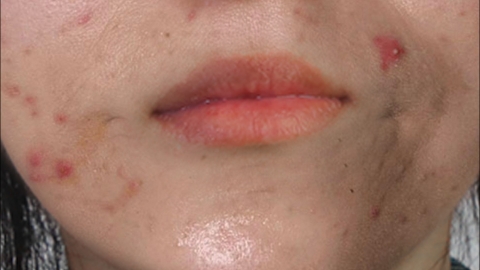How to treat pustular acne
Generally, pustular acne is a common skin condition that may be related to overactive sebaceous glands, dietary factors, drug-induced acne, common acne, and endocrine disorders. It can usually be treated with general treatments and medication. If discomfort symptoms occur, it is recommended to visit a hospital promptly for standardized treatment under the guidance of a doctor. Detailed analysis is as follows:

1. Overactive Sebaceous Glands
During puberty, hormonal changes may cause the sebaceous glands to become overactive, producing excessive sebum that blocks the hair follicles. If microorganisms such as Propionibacterium acnes multiply excessively within the follicles, an inflammatory reaction may occur, leading to the formation of pustular acne. It is important to maintain clean skin, use gentle facial cleansers, and avoid excessive squeezing of the skin.
2. Dietary Factors
Consumption of high-sugar, high-fat foods, and dairy products may worsen acne symptoms, as these foods may stimulate the secretion of insulin-like growth factors, thereby promoting overactivity of the sebaceous glands and causing pustular acne. A balanced diet with reduced intake of high-sugar, high-fat foods and dairy products, and increased consumption of fruits, vegetables, and other foods rich in natural fiber may help improve acne symptoms.
3. Drug-induced Acne
Certain medications may cause or exacerbate acne symptoms, such as corticosteroids and anti-tuberculosis drugs. The mechanism may be related to the effects of these drugs on hormone levels in the body or the induction of skin immune responses. This type of acne is often accompanied by symptoms such as dry skin and itching. It is recommended to discontinue or replace the suspected medication. Applying a warm towel or hot water bag to the affected area for 10–15 minutes multiple times a day may help promote pus drainage and relieve pain.
4. Common Acne
Common acne is caused by factors including androgen-induced excessive sebum secretion, keratinization of the pilosebaceous duct, Propionibacterium acnes proliferation, and inflammatory reactions. It is typically accompanied by symptoms such as comedones, papules, nodules, and cysts. Under a doctor's guidance, topical treatments such as tretinoin cream, benzoyl peroxide gel, and fusidic acid cream may be used.
5. Endocrine Disorders
Stress, irregular作息, and staying up late can lead to endocrine disorders, causing hormonal imbalances in the body, which in turn stimulate excessive sebum production by the sebaceous glands, resulting in the aforementioned symptoms. It may be accompanied by rough skin, pigmentation spots, irritability, menstrual irregularities, and weight changes. Patients should follow medical advice to use medications such as Xiaoyao Pills, Wuji Baifeng Pills, and tanshinone injections for treatment.
It is recommended to maintain a cheerful mood, avoid excessive anxiety and stress, participate in sports and recreational activities, and relax to relieve mental and physical stress, thereby improving treatment outcomes and quality of life.




